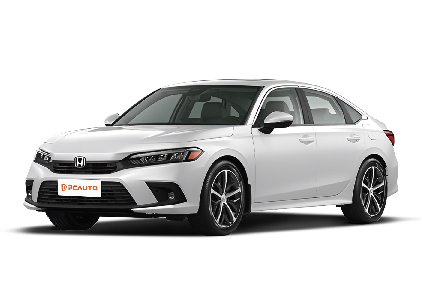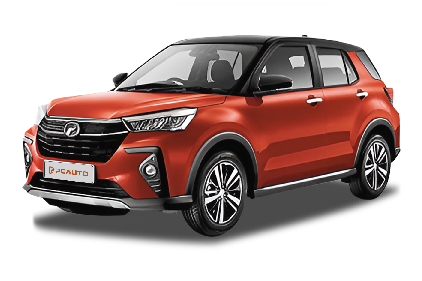Q
What's the Mainentance Cost of Honda City Hatchback? Get Idea Here!
The maintenance costs of the Honda City Hatchback vary depending on service items and vehicle condition. A routine service (including engine oil, oil filter, and basic inspections) typically ranges between RM300 to RM500 and should be performed every 10,000 km or 6 months. For services involving fully synthetic oil, air filter replacement, or spark plug changes, the cost may increase to RM600–RM800, depending on 4S center pricing and promotional offers.
The e:HEV hybrid version requires slightly higher maintenance costs, but thanks to its regenerative braking system and efficient electric motor, certain components experience less wear, potentially making it more economical in the long run. Additionally, services beyond routine maintenance—such as brake pad replacement (around RM250–RM400) or tire changes (price varies by brand)—will further adjust the total cost.
Owners are advised to follow Honda's official maintenance schedule for periodic inspections to ensure optimal vehicle condition. Booking service appointments in advance with authorized 4S centers is recommended to secure the best pricing and maintain factory warranty coverage.
Special Disclaimer: This content is published by users and does not represent the views or position of PCauto.
Popular Models
Related Q&A
Q
What's the Reslae Value of Honda City Hatchback?
The resale value of the Honda City Hatchback is influenced by multiple factors, including the vehicle's age, condition, mileage, market demand, and configuration version. Generally speaking, Honda models have an above - average resale rate in the local market.
Take the City Hatchback launched in 2021 as an example. The new car price of the entry - level 1.5 S is about RM75,000. After three years of use, the second - hand price is approximately between RM55,000 and RM60,000 (depending on the vehicle's condition), which means it retains about 70% - 75% of its original value. If you choose the higher - spec V or RS versions, the residual value may be slightly higher, but it is also affected by mileage and maintenance records.
The Honda brand is quite popular in the Malaysian second - hand car market, especially the City series with a vehicle age of less than five years. Due to its fuel economy and reliability, there is a consistent demand for them. It is recommended that before selling your car, you ensure regular maintenance, keep a complete maintenance record, and refer to the recent transaction prices of the same model to get a more reasonable second - hand valuation. However, the actual price still depends on market fluctuations and the buyer's bargaining situation.
Q
What's the Engine Displacement of Honda City Hatchback?
The Honda City is available in both gasoline and gasoline hybrid (HEV, MHEV) versions. All models are equipped with an engine with a displacement of 1498cc, which is equivalent to 1.5 liters. This engine size strikes a balance between power and fuel efficiency, making it suitable for daily commuting and various driving needs.
The 1498cc gasoline engine can deliver a maximum power of 121 horsepower and a peak torque of 145 Nm. It is paired with a Continuously Variable Transmission (CVT) that enables smooth gear shifts.
In the gasoline hybrid RS e:HEV model, the 1498cc engine works together with an electric motor. The engine has a maximum power of 98 horsepower and a torque of 127 Nm, while the electric motor provides an additional 109 horsepower and 253 Nm of torque. The combined power output offers better acceleration performance.
Q
What Engine Is Equipped by Honda City Hatchback?
The two - door version of the Honda Fit offers different engine options. Some models are equipped with a 1.5 - liter naturally aspirated gasoline engine, with a naturally aspirated (NA) intake system. The engine has a displacement of 1,498 cc, generating a maximum power of 89 kW at 6,600 rpm and a peak torque of 145 Nm at 4,300 rpm, with a maximum horsepower of 121 hp. The vehicle is also equipped with a continuously variable transmission (CVT).
There is also the RS e:HEV model. It is equipped with a 1.5 - liter gasoline engine and a hybrid system. The engine itself can produce a maximum power of 72 kW at 5,600 - 6,400 rpm and a torque of 127 Nm at 4,500 - 5,000 rpm, with a maximum horsepower of 98 hp. The electric motor can provide a total power of 80 kW, a torque of 253 Nm, and a maximum horsepower of 109 hp. The battery type is a lithium - iron phosphate battery with a capacity of 1.3 kWh, and it uses an electronic continuously variable transmission (E - CVT). These engines strike a balance between performance and fuel economy to meet various driving needs.
Q
What's the Type of Honda City Hatchback's Gearbox?
The type of the Honda City's gearbox varies depending on the model and its powertrain. For gasoline-powered models, the transmission type is CVT (Continuously Variable Transmission), providing a smooth driving experience by continuously adjusting the gear ratio, which helps optimize fuel efficiency and power output according to different driving conditions.
For hybrid models like the Honda City RS e:HEV, it is equipped with an E-CVT (Electronically Controlled Continuously Variable Transmission). The E-CVT is specifically designed for hybrid vehicles. It coordinates the power output between the engine and the electric motor, allowing smooth switching between different driving modes such as pure electric drive, engine drive, and hybrid drive, thereby enhancing the overall efficiency and performance of the hybrid system.
Q
What's the PCD Size of Honda City Hatchback?
The PCD (Pitch Circle Diameter) of the Honda City Hatchback is 5x114.3, which means the wheel's bolt holes are arranged in a circle with a diameter of 114.3 mm and consist of 5 bolt holes. This specification is the same as that of the Honda Jazz, certain City Sedan variants, and some mainstream Japanese models in the Malaysian market (such as the Toyota Vios and Nissan Almera), providing ample options for wheel upgrades or replacements.
When changing wheels or tires, owners should not only consider the PCD but also ensure compatibility with the center bore (CB) size, offset, and tire specifications to maintain safety and handling stability. If upgrading to larger or more customized wheels, it is advisable to consult a professional tire shop or an authorized Honda service center to avoid purchasing unsuitable rims that could compromise driving safety.
Q
Does Honda City Hatchback Support Apple Carplay?
The Honda City is equipped with Apple CarPlay. The all-new 2024 Honda Fit hatchback has been launched in Malaysia. The vehicle features an 8-inch multimedia touchscreen on the center console, which supports wireless connection with Apple CarPlay and Android Auto, allowing users to connect their iPhones to the car's infotainment system. Once connected, drivers can directly access various functions of their iPhones, such as navigation, music playback, making calls, and sending text messages, through the car's touchscreen or voice control. By integrating the familiar iPhone interface with the vehicle system, it enhances the in-car experience. This is a very convenient feature for those who rely on their iPhones for various daily tasks and want to achieve seamless connectivity while driving.
Q
What's the Brand of Honda City Hatchback's Tire?
The factory-fitted Honda City Hatchback in the Malaysian market is primarily equipped with Yokohama's BluEarth-GT series tires (specifically 185/55 R16 or 185/60 R15, depending on the variant). These tires emphasize fuel efficiency, durability, and wet-road safety, aligning with the City Hatchback's positioning as an economical family car. However, depending on the production year or promotional packages, some vehicles may be equipped with tires of other brands such as Dunlop or Bridgestone. The exact tire model should be verified based on the factory configuration at the time of purchase.
For owners looking to replace their tires, other brands in the same specification—such as Michelin Energy XM2+ or Continental CC6—can be considered. These are popular energy-saving and comfort-oriented tire options in the Malaysian market, offering a balance between fuel efficiency and quiet performance. Regular checks on tire wear and pressure are recommended, along with adhering to the manufacturer's suggested replacement intervals to ensure driving safety.
Q
Is Honda City Hatchback a Good Car? Learn the Pros and Cons Here
The Honda City Hatchback has many advantages and is a great car. In terms of appearance, it features a delicate, stylish, and sporty design. For instance, some models are equipped with a honeycomb radiator grille and an added rear spoiler. The RS version also has unique trim panels and side skirts, making it highly recognizable. The interior details have been optimized. The RS version has an all - black interior. In some models, the instrument panel has been upgraded to a 4.2 - inch TFT color screen. The central control touch - screen host is 8 inches, and the pixels of the rear - view camera have been improved.
In terms of safety and intelligent assistance, the entire vehicle lineup comes standard with multiple safety systems, such as ABS anti - lock braking, vehicle stability control, lane departure warning, and autonomous emergency braking. There's also an ISO FIX child seat interface. Some models are equipped with the Honda Sensing function, providing comprehensive protection for the driver. Additionally, some models have added practical features like wireless CarPlay and a wireless charging panel.
In terms of power, there are multiple options. The 1.5L naturally aspirated engine paired with a CVT transmission offers a smooth power output, which is sufficient for daily driving. The hybrid system in the e:HEV RS model delivers excellent power and has relatively low fuel consumption. However, it also has some drawbacks. For example, the rear brakes of some models are drum brakes, which are slightly inferior to disc brakes in terms of braking performance. The rear - seat space may feel a bit cramped for taller passengers. Overall, the Honda City Hatchback performs well in terms of appearance, safety, and power, and can meet the daily needs of most users.
Q
What's the Width of Honda City Hatchback?
The Honda City has a width of 1,748 millimeters. This B-segment hatchback offers a comfortable interior space for passengers, and its width helps create a spacious cockpit, providing sufficient shoulder room for both front and rear passengers and enhancing the overall comfort during the drive. Whether it's a short trip around the city or a long-distance journey, this width ensures a more enjoyable driving and riding experience. Moreover, the vehicle's width also plays a certain role in its overall stability and handling on the road.
Q
What's the Road Tax of Honda City Hatchback? How to Calculate It?
The Honda City Hatchback provides petrol and hybrid versions, and the road tax calculation methods vary for different versions. For the petrol version, since its displacement is 1498cc, which is less than 1800cc, according to regulations, it is required to pay 75% excise duty. The specific amount of road tax needs to be comprehensively calculated in combination with the actual value of the vehicle and other factors. Generally speaking, the road tax price to be paid is calculated by multiplying the vehicle value by the 75% excise duty rate and then adding other possible tax items (such as the normal 10% sales tax, which has been waived during the current pandemic).
As for the hybrid version, currently all electric vehicles (including hybrids) registered in Malaysia are exempt from road tax. The tax - exemption period will expire at the end of 2025. Starting from January 1st, 2026, a new policy will be implemented. The road - use tax rate for electric vehicles will be divided into different levels according to engine power: for vehicles with an engine power below 100kW, for every additional 10kW of power, the tax increases by 10 ringgit; for vehicles with an engine power between 100kW and 210kW, for every additional 10kW of power, the tax increases by 20 ringgit; for electric vehicles with an engine power between 210kW (excluding 210kW) and 310kW, for every additional 10kW of power, the tax increases by 30 ringgit. Therefore, the road tax for the Honda City Hatchback hybrid version after 2026 needs to be calculated based on its specific engine power.
Latest Q&A
Q
how much does a bmw ix cost
Right now, the Mazda 3 Hatchback is available with a hybrid (M Hybrid) option in global markets, but there's still no fully electric version. Here in Malaysia, the Mazda 3 Hatchback lineup is pretty much all about the Skyactiv-G petrol engines – hybrids and EVs haven't made their way here yet.
Mazda's hybrid setup pairs an efficient internal combustion engine with mild hybrid tech. It's all about recovering energy and using the electric motor to give the engine a little help, which translates to better fuel economy. Definitely a solid pick if you're someone who prioritizes saving at the pump.
If you've got your heart set on a greener ride, though, there are other hybrid options in Malaysia. Think models like the Toyota Corolla Cross Hybrid or the Honda City e:HEV – those are worth checking out.
Mazda's probably going to expand its electrified lineup down the line, but for now, your best bet is to hit up your local dealer to see what's new. Oh, and don't forget – the Malaysian government offers tax incentives for new energy vehicles. It's a good idea to look into the latest policies before you buy, so you can find the perfect car that fits both your needs and the current offers.
Q
bmw ix how to open charging port
In the current Malaysian market, the Mazda 3 Hatchback is offered in three main trim levels for consumers to choose from: the entry-level Mazda 3 Hatchback 1.5L Mid, the mid-range Mazda 3 Hatchback 2.0L High, and the top-spec Mazda 3 Hatchback 2.0L High Plus.
The 1.5L Mid is powered by a 1.5-liter Skyactiv-G engine, making it a solid pick for those who prioritize fuel efficiency. It comes equipped with LED headlights, an 8.8-inch infotainment screen, and essential safety features like blind-spot monitoring.
Stepping up to the 2.0L High gets you a more potent 2.0-liter engine, along with upgrades such as leather seats, power-adjustable driver's seat, and a more comprehensive i-Activsense safety suite.
At the top of the range, the 2.0L High Plus adds even more premium touches, including a Bose sound system, a panoramic sunroof, and a 360-degree surround-view camera.
Across all trims, the Mazda 3 Hatchback boasts the brand's distinctive Kodo design language, with an interior crafted from high-quality materials that really showcase that Japanese attention to detail and fine craftsmanship.
Malaysian buyers can pick the trim that best fits their budget and needs, and it's worth noting that Mazda models come with a 5-year free maintenance package locally – a nice bonus that adds to their long-term ownership value.
Q
bmw ix how much
In Malaysia's hot hatch segment, the Mazda3 Hatchback goes head-to-head with heavyweights like the Honda Civic Hatchback, Toyota Corolla Hatchback, and Volkswagen Golf. What really makes the Mazda stand out though? That signature Kodo design language and a cabin that feels way more premium than its price tag suggests. Those sleek lines and high-quality materials inside? Total eye-catchers in this class.
Under the hood, Mazda's Skyactiv-G engine strikes a solid balance between fuel efficiency and pep. Sure, it might not match the Civic Hatchback's 1.5T in raw horsepower numbers, but the linear acceleration and sharp handling tuning here are pure joy for drivers who actually love being behind the wheel.
Space-wise, the Mazda3 Hatchback's rear legroom is a bit tighter than the Corolla Hatchback's, but trade that for seats that feel more supportive on long drives and cabin quietness that drowns out road noise better than most rivals. And let's not sleep on the standard i-Activsense safety suite – it's packing class-leading active and passive tech that should definitely appeal to safety-conscious Malaysian buyers.
Pricing lands it slightly above its Japanese competitors but undercuts the European players, carving out a nice sweet spot in the market. So, for Malaysian shoppers prioritizing head-turning design, engaging driving dynamics, and a cabin that feels genuinely upscale, the Mazda3 Hatchback is a strong contender. But if outright space or blistering turbo power is your top priority? You might want to cross-shop those other options.
Q
how much is ix bmw
The current Mazda3 Hatchback in Malaysia offers a palette of exterior colors including the signature Soul Red Crystal, Machine Gray, Snowflake White Pearl, Deep Crystal Black, and Polymetal Gray. These hues aren't just about showcasing Mazda's iconic Kodo: "Soul of Motion" design philosophy—they're brought to life using the brand's proprietary high-gloss painting technology, which gives the bodywork incredible depth and dimension that shifts beautifully under different lighting conditions.
Standouts in this lineup are undoubtedly Soul Red Crystal and Polymetal Gray. Soul Red Crystal achieves its head-turning depth through a unique layering process of aluminum flakes and reflective coats, while Polymetal Gray uses a multi-layer application to create a sophisticated metallic finish with a modern edge.
For Malaysian buyers, choosing a color isn't just about personal taste—practicality plays a role too. Darker shades like Machine Gray or Deep Crystal Blue really accentuate the 3's sculpted lines but can show fine scratches more easily, whereas lighter options like Snowflake White Pearl tend to hide dirt better and stay cooler under our intense tropical sun.
Mazda's paint technology is built tough, with excellent rust resistance and durability to handle Malaysia's rainy, humid climate. A regular wax every few months will help keep that factory-fresh shine locked in for years to come, though—definitely worth the little extra effort.
Q
berapa harga bmw ix
To experience the Mazda 3 Hatchback, you can schedule a test drive at authorized Mazda dealerships throughout Malaysia, such as Bermaz Motor in Kuala Lumpur, Mazda Auto Fabulous in Penang, or Mazda Southern in Johor. It is advisable to first visit the official Mazda Malaysia website to locate your nearest dealership and make an advance appointment to ensure the availability of the test drive vehicle.
The Mazda 3 Hatchback has gained popularity for its excellent handling and the striking Kodo-Soul of Motion design language. It is equipped with the efficient Skyactiv-G engine and i-Activsense safety technology. During the test drive, we recommend paying particular attention to the precision of the steering response and the quality of the interior materials. It is also beneficial to compare the differences between various trim levels, such as the High Plus and High Spec versions.
If you are considering a purchase, be sure to inquire with the dealership about current promotional offers and the comprehensive 5-year manufacturer warranty. This model is well-suited for young families seeking an engaging driving experience without compromising on everyday practicality.
View MoreLatest News

Nissan announced the next generation of ProPILOT, allowing drivers to go hands-off on urban streets.
JamesSep 23, 2025

Suzuki makes major changes to its brand logo for the first time in 22 years, adopting a flat design style
JohnSep 23, 2025

YANGWANG U9X, with a speed record of 496.22km/h, claims the top spot on the global car speed rankings.
WilliamSep 22, 2025

Due to dashboard display failure, Toyota recalls nearly 1.467 million vehicles worldwide, including Camry, RAV4, etc.
WilliamSep 19, 2025

2026 Toyota GR Corolla launched in Japan, with improved cooling and body rigidity
Kevin WongSep 19, 2025
View More




 Cars
Cars















